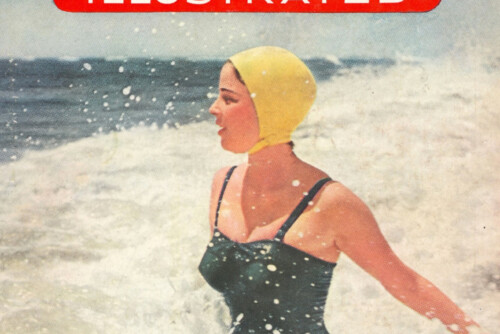In 1998 New York state signed the Hudson River Park Act into law, which essentially created a public-private partnership to develop the dilapidated piers from Battery Park to 59th Street along the West Side of Manhattan. The Hudson River Park Trust (HRPT) was born as the overseers for the future development of each pier, one by one, relying mostly on high-end commercial development projects to ensure its completion as a quasi-public park. The timing for this new park was ripe as more luxury condominium developments were sprouting up along the West Side. The plans for Hudson River Park paved a clear path for these developments, becoming one of the largest and most expensive parks development projects in New York City since Central Park.
The HRPT selected the Christopher Street Pier as first in line for closing and redevelopment. They proceeded, claiming the pier was underutilized and of no particular significance, despite the presence of thousands of people that found safety and community in an area of no interest to the city until they realized it was capable of making money. The pier was fenced off in 2001 and reopened in 2003, complete with manicured lawns, heavy police presence, expensive amenities, and a 1:00 a.m. curfew for an area that never had such restrictions.
Since the Stonewall Rebellion in 1969 and particularly since the 1980s, the West Village and the Christopher Street Pier have been well-known social and cultural hubs for the LGBTQ community, especially people of color and homeless youth. For many young people kicked out of their homes, harassed in homeless shelters, and targeted on the streets for being LGBTQ, the West Village served as a safe haven and a site where new family and support systems were developed. The Pier became a first or second home for many LGBTQ youth of color, who make up a significant percentage of the homeless youth population in New York City.
Rewinding several years before the development of Hudson River Park, the West Village had other massive transformations underway. In 1992, the Neutral Zone opened its doors as the only late-night drop-in center for LGBTQ youth in New York City on Christopher Street in the far West Village. In 1995, they were kicked out of their space due to pressure from residents in the neighborhood, with support from openly gay elected officials. In 1994, under the Giuliani Administration, the Quality of Life policies were founded and tested on the NYPD’s sixth precinct (covering the West Village) and in 1995 they were exported all over New York City. Then and now, the Quality of Life policies disproportionately target low-income people, homeless people, and LGBTQ youth of color in the West Village. This period also saw the rise of resident street patrols such as the Christopher Street Patrol and R.I.D. (Residents In Distress—intentionally named after the medicine that kills lice). These resident street patrol programs focused their activities on removing LGBTQ youth of color and homeless people, whom they perceived as a threat to their property values and quality of life.
These staggering policing practices and development priorities in a well-known gay-friendly neighborhood could certainly be confusing to some, but the message was sent loud and clear: if your shade of gay isn’t white and affluent, then this neighborhood isn’t for you anymore. But some of the same people sending that message are, ironically, some of the first to claim the significance of the Stonewall Rebellion in West Village history, conveniently forgetting it was street youth and queens who fought back against the police violence. Ultimately, the city’s policies point to the reality that we are more likely to be remembered by the presence of monuments than by the presence of our people. Case in point: In November 2005, the corner of Hudson Street and Christopher Street was named after Stonewall veteran and Latina transgender activist Sylvia Rivera who passed away in 2002. Months before the street sign unveiling, the NYPD sixth precinct launched Operation West Side, increasing police patrols late at night in the far West Village (largely around Sylvia’s street sign), targeting primarily transgender women of color. If Sylvia were still alive, she would have had problems with police harassment standing at the intersection named after her.
FIERCE was founded in 2000 by a group of primarily LGBTQ youth of color who were collectively witnessing the deterioration of access to public spaces and aggressive policing practices in the West Village. While the problems were obvious, the impetus for FIERCE was the lack of a grassroots political vehicle for LGBTQ youth of color to identify and lead the path to their own solutions. Since FIERCE was founded, we have prevented the displacement of LGBTQ youth of color in historically safe spaces in the West Village amid rapid redevelopment in the neighborhood. In particular, we stopped a 9:00 p.m. curfew on the Christopher Street Pier, eliminated the $25,000 fee for mobile medical service vans to park on the pier, and increased access to bathrooms and free social events, including the first-ever ball to be held on the pier celebrating the history of the ballroom community’s deep connection to the pier prior to its redevelopment. In March 2008, FIERCE played a leadership role in a broad coalition to defeat the Related Companies’ “Vegas on the Hudson” development slated for Pier 40, a stone’s throw away from the Christopher Street Pier. In 2007, FIERCE launched the Our S.P.O.T. (Safe Place for Organizing Together) Campaign, which calls for the inclusion of a 24-hour LGBTQ youth center and other community-friendly uses, such as schools and athletic fields, in any future development on Pier 40.
The struggle for the Christopher Street Pier and for an LGBTQ youth center on Pier 40 has positioned FIERCE as a legitimate force in West Village politics and community development issues. Our campaign victories to preserve the Christopher Street Pier and the Our S.P.O.T. campaign are unique examples of the possibilities of collective ownership of public space and our rightful claim to a stake in community development. We wrote the white paper—“Expanding Access to Public Space at Hudson River Park” (PDF)—to ensure the use of public land for public good. We rejected the inevitability of high-end development at the expense our presence in a neighborhood that is still home, even if our community cannot afford to own property or rent luxury apartments. We helped to lead a diverse chorus of voices against private development on Pier 40 and, through that major victory, we have gained a large base of support for the LGBTQ youth center from residents.
More broadly, our process of developing the white paper policy recommendations, our successes cohering a broad West Village coalition to defeat “Vegas on the Hudson,” and our persistent membership-led campaign to secure a permanent home for our community in the West Village is an example of policy and movement-building priorities for the LGBTQ movement. This work provides concrete examples of how the intersections of race, class, gender, and sexuality can be thoughtfully integrated into a campaign development process that distills down to a policy demand that would be widely felt if won. It also demonstrates the importance of organizing and leadership development as methods to identify policy solutions. To win true, long-lasting social change we will need leaders from communities who are actively shaping the priorities of our organizations and movements. We are constantly thankful for the members of FIERCE who fearlessly fight violence and oppression every day.
If the white paper policy recommendations are implemented, it will lay the foundation we need to create community-friendly development and serve as a model for future development plans across the city. It fundamentally calls into question the profit logic of development and demands viable alternatives that can and should meet the needs of the people that need the resources most. In our case, rather than “Vegas on the Hudson,” where Cirque du Soleil shows would drown out the cries for safety and community, we want a 24-hour LGBTQ youth center—an institution that will stay put as long as it is needed. A place where our community can rest assured that we will be remembered by more than just presence of street signs, rainbow flags, or monuments: It will be Our S.P.O.T.
FIERCE is a membership-based organization building the leadership and power of lesbian, gay, bisexual, transgender, and queer (LGBTQ) youth of color in New York City. We develop politically conscious leaders who are invested in improving ourselves and our communities through youth-led campaigns, leadership development programs, and cultural expression through arts and media. FIERCE is dedicated to cultivating the next generation of social justice movement leaders who are dedicated to ending all forms of oppression.
The white paper (PDF) was developed through a collective process with FIERCE youth members on the Campaign Steering Committee, FIERCE staff, and support from the Urban Justice Center’s Community Development Project. For more information on FIERCE’s campaigns to protect access to public spaces and other organizing and leadership development programs, please visit: www.fiercenyc.org.




